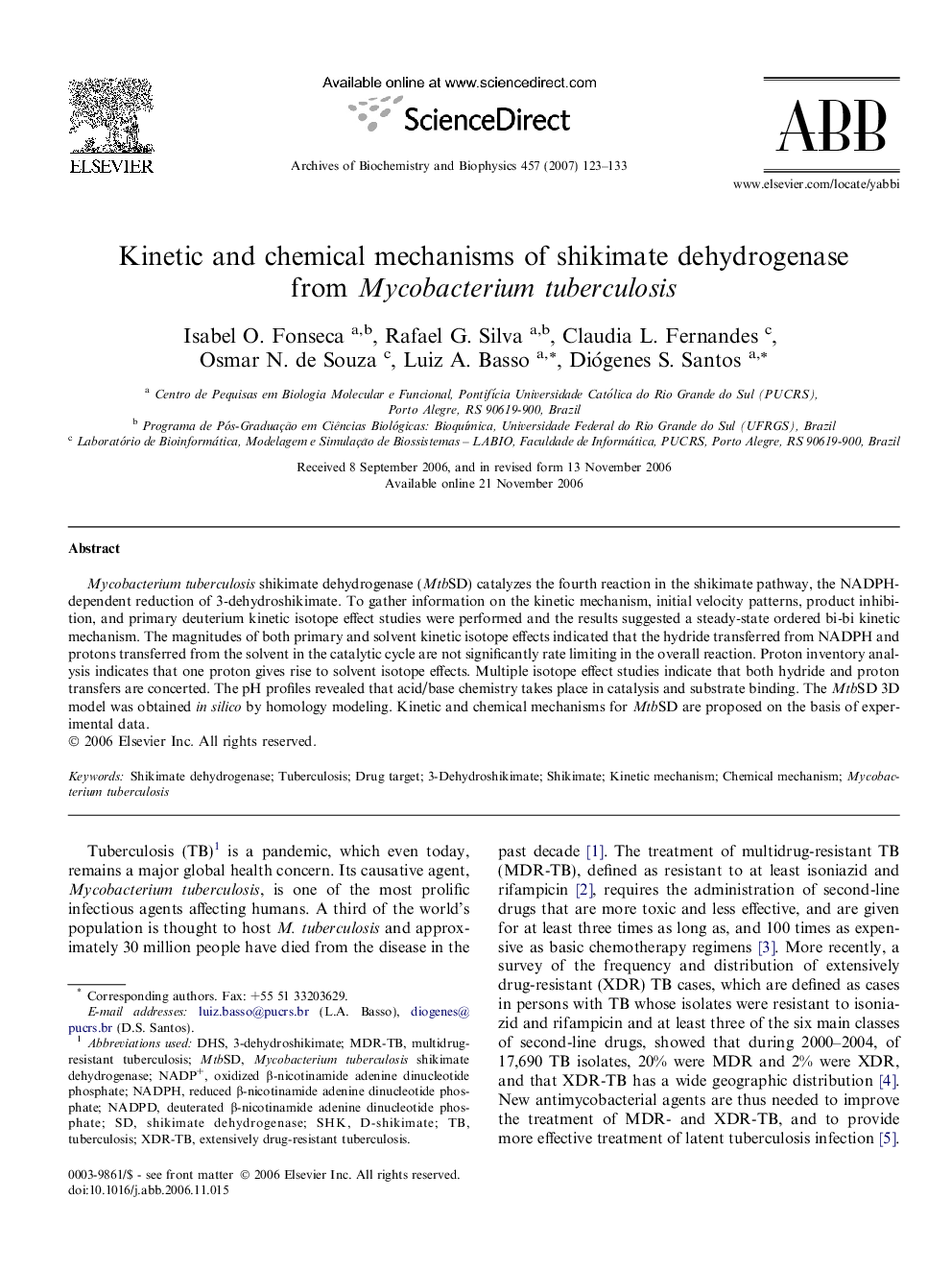| Article ID | Journal | Published Year | Pages | File Type |
|---|---|---|---|---|
| 1927410 | Archives of Biochemistry and Biophysics | 2007 | 11 Pages |
Abstract
Mycobacterium tuberculosis shikimate dehydrogenase (MtbSD) catalyzes the fourth reaction in the shikimate pathway, the NADPH-dependent reduction of 3-dehydroshikimate. To gather information on the kinetic mechanism, initial velocity patterns, product inhibition, and primary deuterium kinetic isotope effect studies were performed and the results suggested a steady-state ordered bi-bi kinetic mechanism. The magnitudes of both primary and solvent kinetic isotope effects indicated that the hydride transferred from NADPH and protons transferred from the solvent in the catalytic cycle are not significantly rate limiting in the overall reaction. Proton inventory analysis indicates that one proton gives rise to solvent isotope effects. Multiple isotope effect studies indicate that both hydride and proton transfers are concerted. The pH profiles revealed that acid/base chemistry takes place in catalysis and substrate binding. The MtbSD 3D model was obtained in silico by homology modeling. Kinetic and chemical mechanisms for MtbSD are proposed on the basis of experimental data.
Keywords
Related Topics
Life Sciences
Biochemistry, Genetics and Molecular Biology
Biochemistry
Authors
Isabel O. Fonseca, Rafael G. Silva, Claudia L. Fernandes, Osmar N. de Souza, Luiz A. Basso, Diógenes S. Santos,
